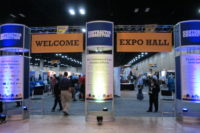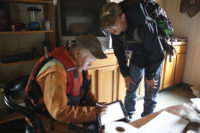The 2013 R&R Market Trends Study
We targeted 5,626 active, qualified Restoration & Remediation subscribers to help with this study


Chart 1 - Click for larger Image

Chart 2 - Click for larger Image

Chart 3 - Click for larger Image

Chart 4 - Click for larger Image





What are the current and future expected usage and purchase of restoration and remediation tools and equipment? How are products sourced and what’s the extent of online purchasing? What is the importance of product attributes during purchase decision making?
If you’re curious about either of the aforementioned three questions as they pertain to the restoration and remediation fields, then you’ve come to the right place. We targeted 5,626 active, qualified Restoration & Remediation subscribers to help answer these questions. The majority of the respondents noted that their primary business is water damage restoration (42%), while 13% respectively identified smoke/fire damage restoration, remodeling contracting or other restoration as their primary business categories. Mold remediation contracting, indoor environmental professionals and other contractors rounded out the study participants. Furthermore, over 80% of respondents use dryers and dehu equipment in their work, while 61% use mold remediation products and 59% use water, smoke and fire damage restoration chemicals.
To kick the study off, one of the first questions we posed to participants is how they foresee business conditions in the restoration and remediation industry moving forward. The results were very favorable. Three-fourths of all respondents expect growth in 2013, with 40% noting that they expect business to grow by more than 10%. Additionally, 85% expect business to grow in 2014, with almost 60% predicting growth to be greater than 10%. (See Chart 1)
Tools and Equipment
More than half (55%) of all study respondents belong to organizations that own more than 10 types of equipment, with 89% owning moisture meters, 88% owning air movers/blowers and 87% owning dehus. Curious to see what our respondents identified as areas of purchasing interest in the future? You can see Chart II for a complete look, but not surprisingly, products that are more disposable like PPE equipment and area containment/wall barrier products were among the leaders. Equipment such as dehus, air movers, moisture meters and air scrubbers are also projected to be highly sought after in the future.
In terms of spending, about three-fourths of respondents identified spending up to $50,000 on new tools and equipment last year. In the future, 53% of respondents expect spending to increase, while only 15% identified a projected decrease in spending.
Chemicals
There are a lot of chemicals involved in the restoration and remediation fields. To get a look at what our respondents currently use as well as what they expect to use in the next year, see Chart III. Here are some of the highlights:
- The three top chemicals – anti-microbials, disinfectants and deodorizers – are expected to continue to be used at a similar pace.
- Four percent of respondents expect to increase their usage of preventative coatings/sealers.
Product Sourcing/Purchase Criteria
How do professionals acquire the products and equipment to get the job done? Fifty-five percent of all respondents indicated that they use a local distributor or supplier (respondents, on average, use six different suppliers), while 20% purchase directly from a manufacturer and 16% from a big box home center. Additionally, respondents indicated that 61% of their chemical purchases are completed online, while 72% of tools and equipment purchases are done through the Internet.
Nearly all respondents indicate product quality/reliability as the most important factor in their buying decisions. This is followed by past experiences, product availability, price and customer service. See Chart IV for complete details.
The survey was conducted and findings were compiled by Clear Seas Research, a division of BNP Media. For information about ordering or to find out more about Clear Seas Research services, contact Ulka Bhide at bhideu@clearseasresearch.com.
Looking for a reprint of this article?
From high-res PDFs to custom plaques, order your copy today!












